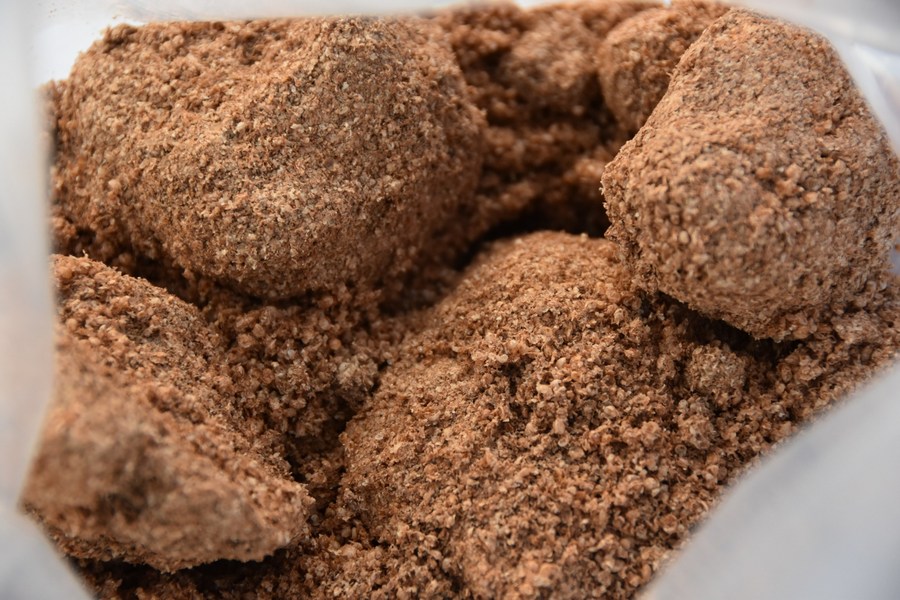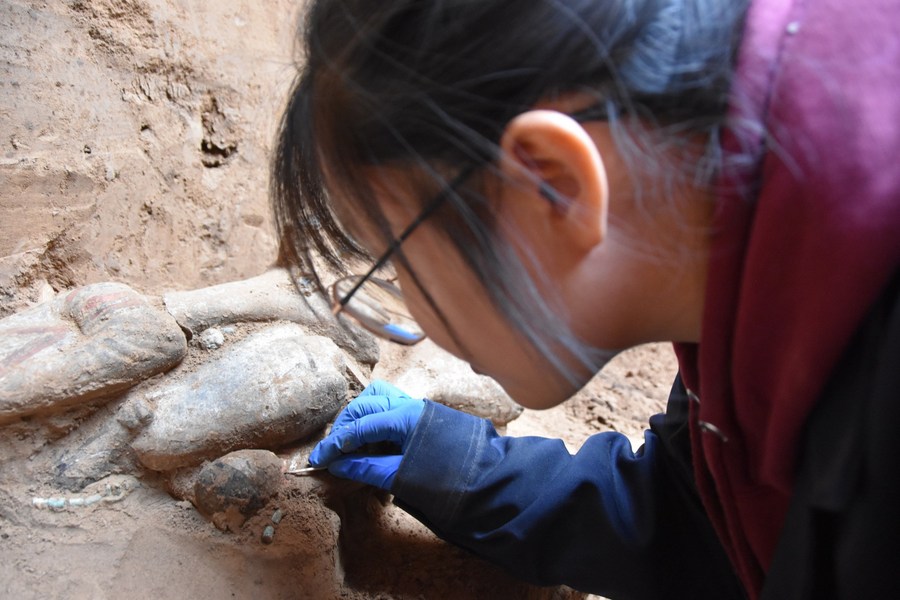
Photo taken on April 18, 2021 shows millet grains unearthed from a Western Han Dynasty tomb in Xixian New Area, northwest China's Shaanxi Province. (Xinhua/Yang Yimiao)
XI'AN, April 21 (Xinhua) -- Archaeologists have discovered a large number of millet grains from a Western Han Dynasty (202 BC-AD 25) tomb in northwest China's Shaanxi Province, providing new evidence of large-scale farming in China more than 2,000 years ago.
The millet remains were found on Sunday in a pottery container excavated from the ancient tomb in the province's Gaozhuang Township, Xixian New Area, according to the excavation team from the Shaanxi Academy of Archaeology.
Tian Duo, an archaeobotanical expert from Northwest University, said the discovery of the millet grains, one of the staple foods of the population in north China during the Western Han Dynasty, demonstrates that agricultural production in the area had already reached a considerable scale in the dynasty's early periods.

An archaeologist works at the site of a Western Han Dynasty tomb in Xixian New Area, northwest China's Shaanxi Province on April 18, 2021. (Xinhua/Yang Yimiao)
According to the excavation team, the tomb is 4 meters long, 3 meters wide and 8 meters deep and it was found relatively well-preserved. Though the coffin of the male tomb owner has decayed, his bones and burial objects, including two bronze mirrors, two iron swords and a jade seal, were found relatively intact.
Nearly 100 heritage pieces, including pottery, ironware, jade ware and bronze ware, have been unearthed from the tomb, the team said.
The tomb provides key research materials for the study of people's daily lives and burial customs in the early Western Han Dynasty, said Zhu Yingpei, the team leader, adding that his team is working to identify the tomb owner. ■




